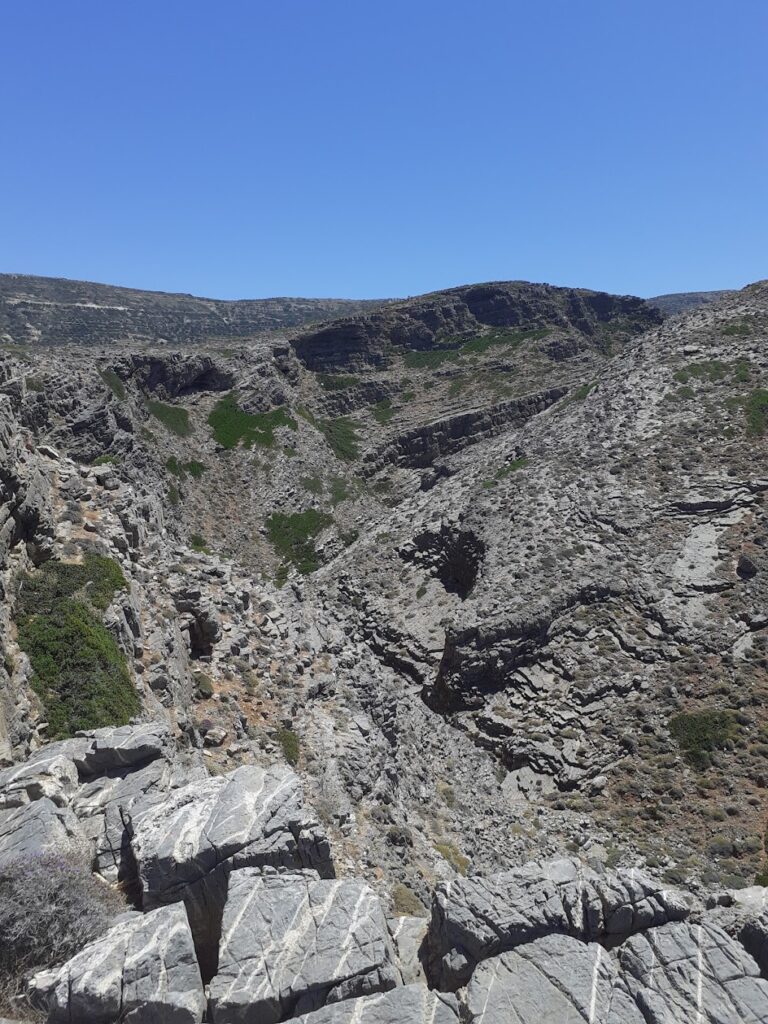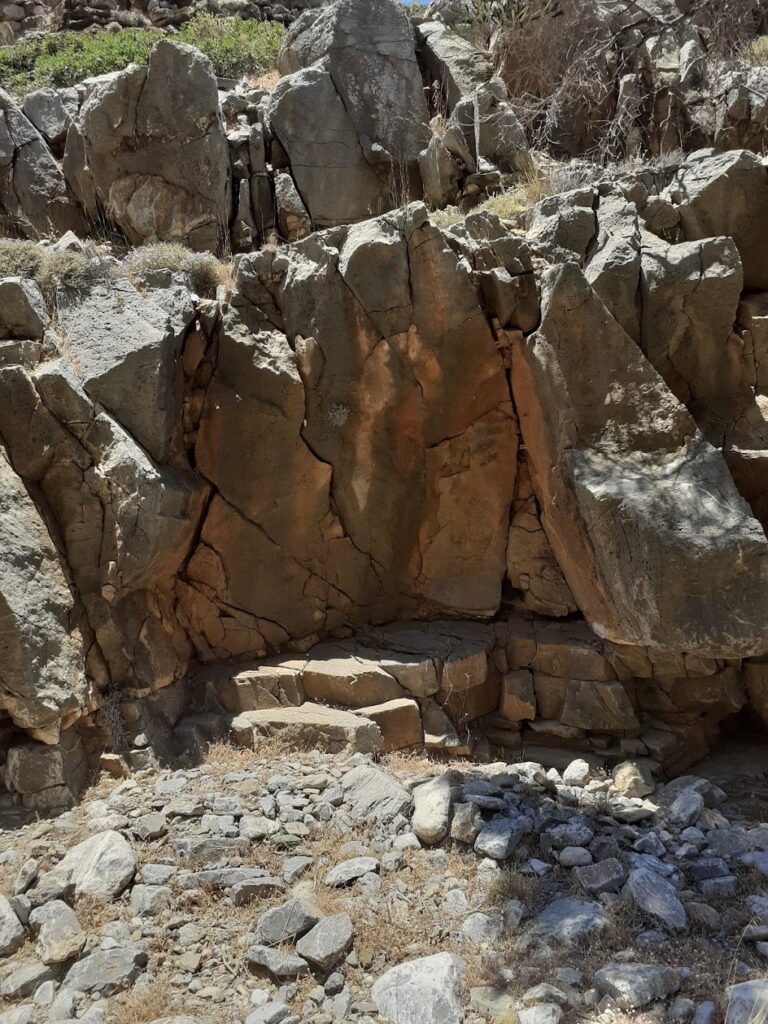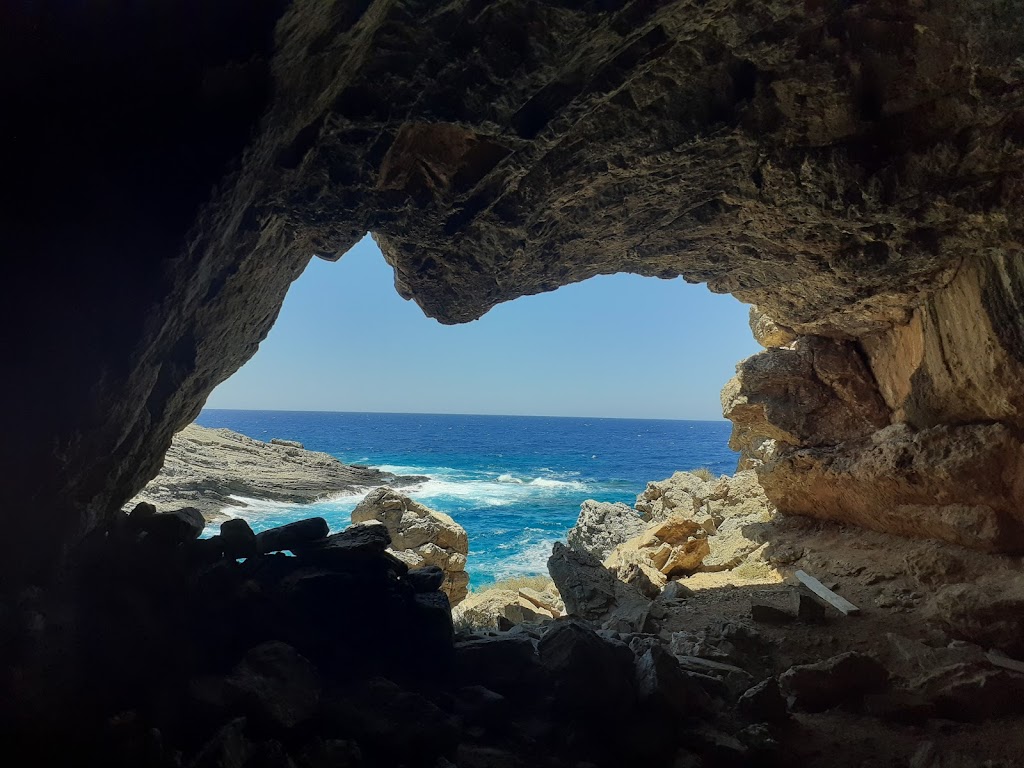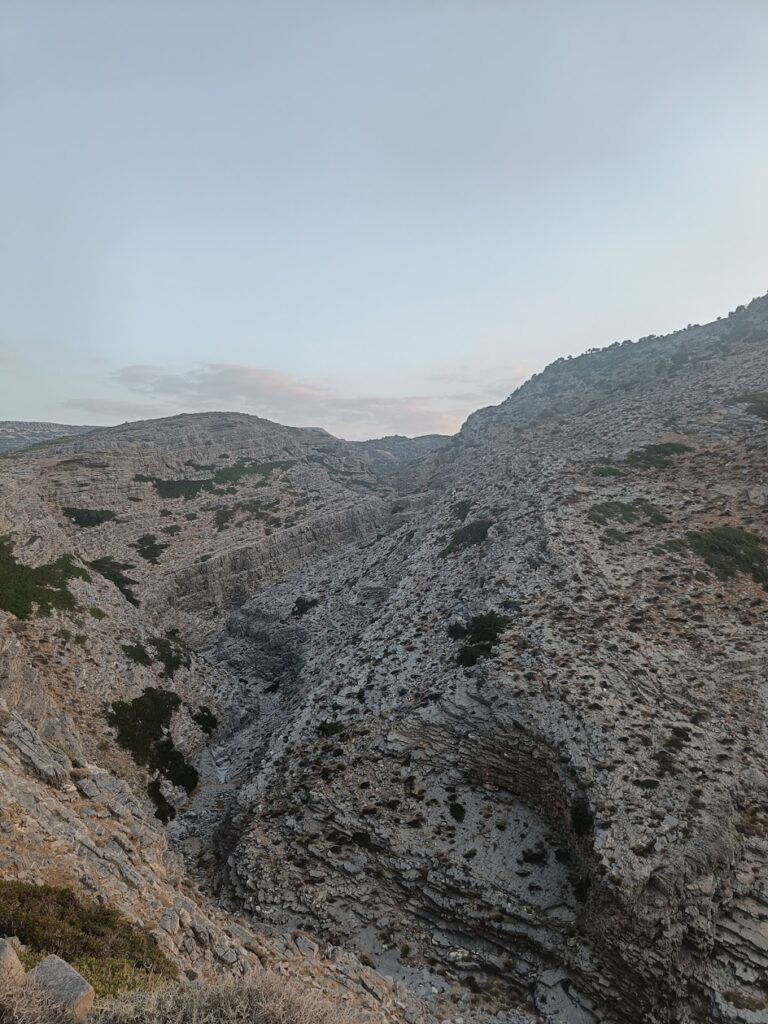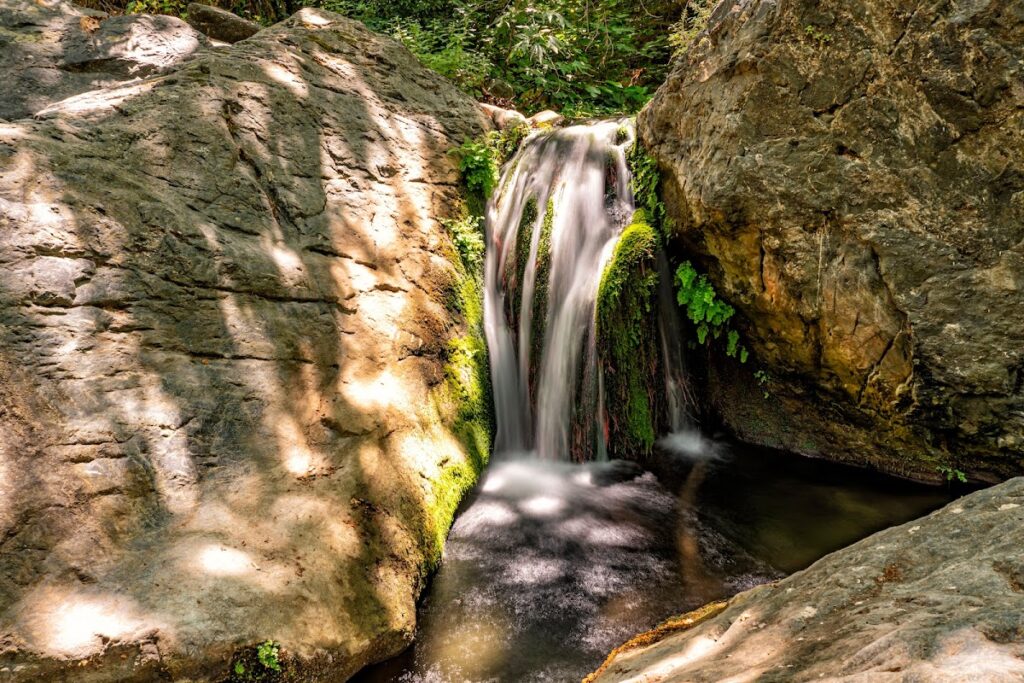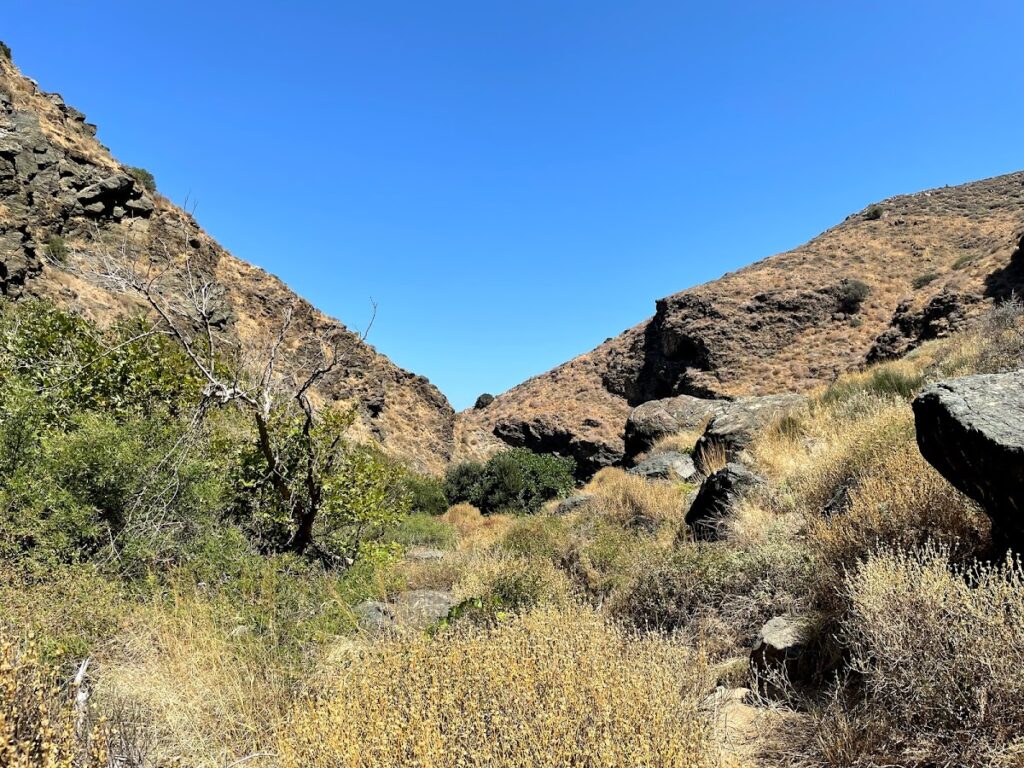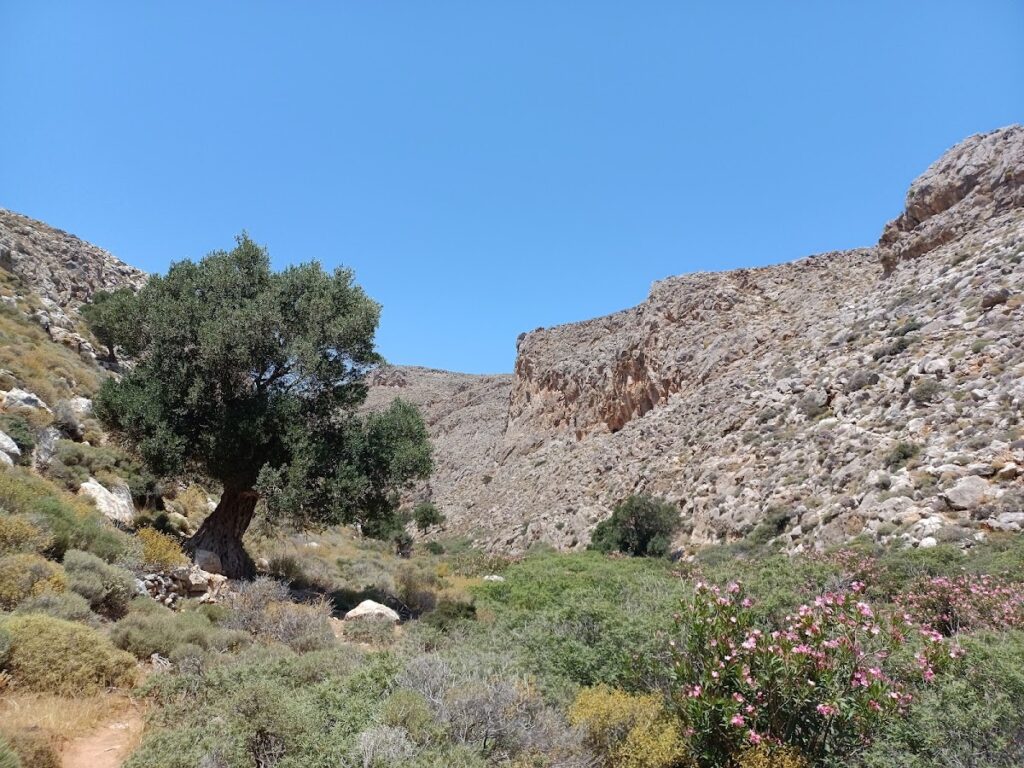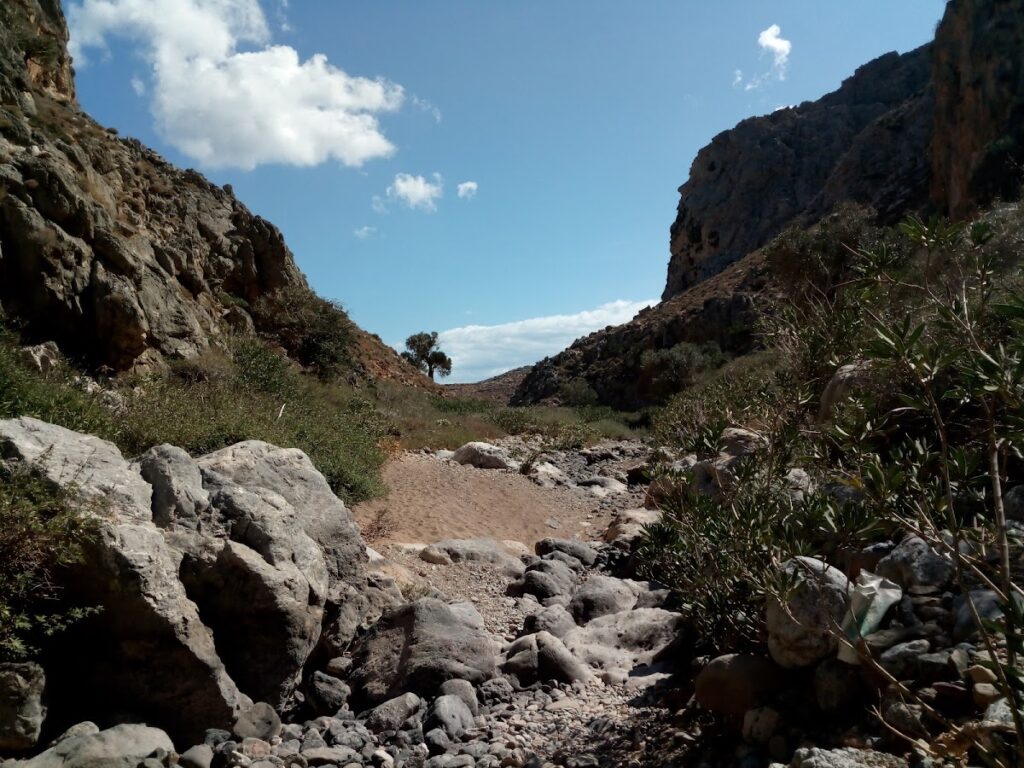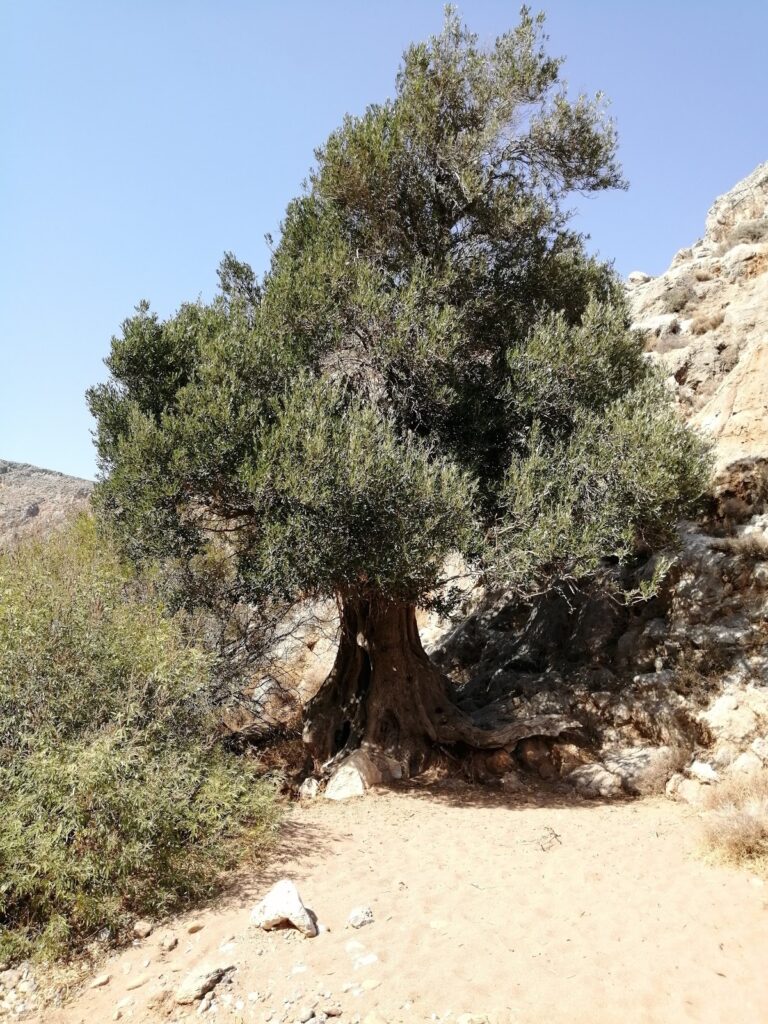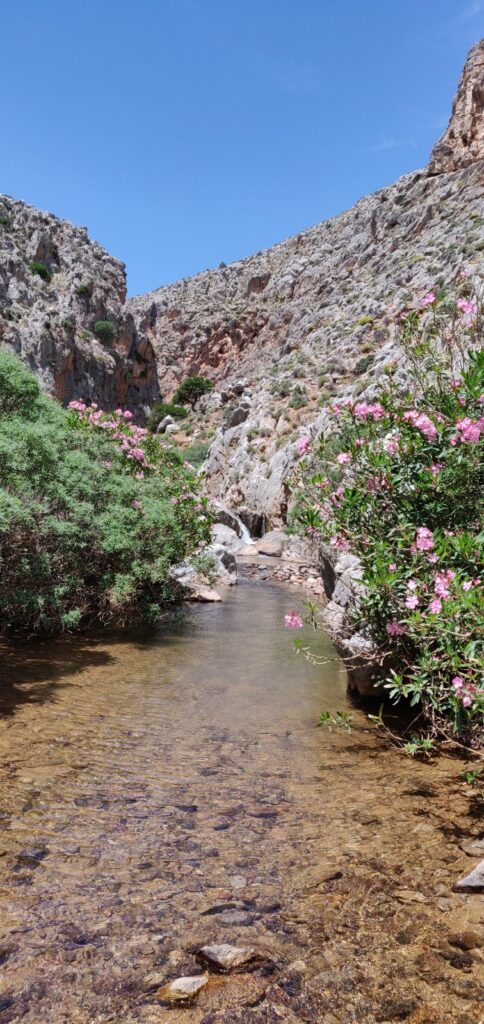Gorges to hike and walk near Stavroménos, in Lassithi region
List of Gorges near Stavroménos
- 7.6 km
- Agii Pantes Gorge
- 3 km
- 1.5 h
- Hiking
The Agii Pantes Gorge, situated adjacent to Skopi in the Sitia province and close to the Faneromeni Monastery, is one of the most accessible walking locations in Crete. The well-marked trail follows the Skafidaras river bed, offering a shaded walkway courtesy of the numerous platan trees. Within the canyon, there are two freshwater springs, Koutsounari and Hosto Nero, the latter of which is nestled within a cave. The gorge’s exit leads to Limni beach (by Platani).
In the winter months, the area that becomes flooded transforms into a significant wetland. Near the gorge’s exit, you can marvel at the white limestone formations that resemble large Pleurotus mushrooms. The Agii Pantes (All Saints) church, located near the gorge’s exit, gives the gorge its name.

- 10.4 km
- Charkomatas Gorge
- 3 h
- Hiking
The Chalkomatas, also known as Charkomatas Gorge, is situated close to the village of Chamezi in the province of Sitia. The gorge begins where a dirt road ascends towards the Prophet Elijah temple and Liopetro fortress. The vegetation in the gorge is sparse, but the limestone geological formations are striking. The path along the usually dry riverbed is mostly smooth and relatively easy to navigate.
Approximately halfway along the route, elevated 60m above the riverbed, lies the Geloudospilios cave. Its name derives from the Geloudes, demonic entities that take the form of women and are said to drain the life from newborns by drinking their blood.
A three-hour trek through the gorge leads to the stunning Roussa Limni beach. The beach is located below the Chalkomatas cave, where, as per local folklore, pirates once concealed their valuable loot. There are rumors that locals even detonated the cave in their quest for gold. Alternatively, Roussa Limni can be accessed via a road from the nearby Papadiokambos beach, which is just a short walk away.
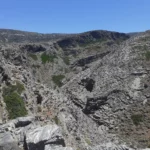
- 11.0 km
- Toplou Gorge
- Hiking
The Cretan countryside hides a remarkable secret – a petite gorge near the Toplou monastery, which is essentially a combination of two ravines that unite just before they meet the sea.
Despite its modest size, it harbors two significant marvels. The first is a quaint colony of Cretan date palm trees (Theophrastus palm trees). The second is a series of freshwater ponds that appear at the end of the gorge, near the sea. These springs are an extraordinary sight, especially considering the typically hot and arid climate of East Crete.
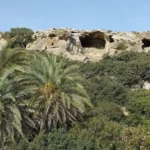
- 11.8 km
- Richtis Gorge
- 5 km
- 3 h
- Hiking
The Richtis Gorge, situated in the Lasithi Prefecture on Crete’s northern side, lies between the cities of Agios Nikolaos and Sitia. The trail begins just outside Exo Mouliana village and concludes at Richtis beach, to the east of Kalavros village. The entire route spans roughly 3 kilometres, with an elevation difference of around 350 meters between the starting point and the beach. Even in the summer months, the gorge retains a plentiful water supply, utilized for local agriculture. The water in the gorge is collected from the Drymias peak (918m) of the Orno range via the Lachanas and Mesa Mouliana streams, which converge near the trail’s starting point.
Depending on the hiker’s speed, the journey to the beach takes approximately three to four hours. The trail commences from the 19th-century stone-arched Lachanas bridge, a historic site where Christians reportedly killed local Turks attempting to reach Sitia and board a ship to Turkey during the population exchange between Greece and Turkey.
The path continues through a verdant landscape along the river, set against the stunning backdrop of Eastern Crete. The air is filled with the aroma of platans, oleander, and sage, and the scent of fresh herbs constantly shifts. Another notable feature is the old water mills that hikers encounter along the path, a testament to the past.
The crowning glory of the gorge is the breathtaking Richtis waterfall, which stands over 20 meters tall and forms a small pond at its base (the term “richtis” translates to “waterfall” in the Cretan dialect). The waterfall maintains its water flow even in the summer, providing a wonderful spot for a revitalizing dip. The trail concludes at the gorgeous pebbly Richtis beach, which features a small park with tamarisk trees, stone seats and tables, and a water fountain offering drinkable water.
Warning: To protect the delicate stream flora and fauna, please refrain from using sunscreen protection when swimming in rivers.
Tip: Many visitors choose to park their car on the main road at Exo Mouliana and walk down the paved road to the Lahanas bridge. By driving and parking next to the Lahanas bridge, you can save around 30 minutes of walking time. From there, it takes about 1.5-2 hours to reach the waterfall. For those less mobile or with young children, the quickest way to reach the waterfall is to drive along the narrow paved road to Richtis beach and walk for around 30 minutes in the opposite direction of the river.

- 14.1 km
- Chochlakies Gorge
The Chochlakies or Karoumes Gorge is nestled in one of the most secluded regions of Crete, near Zakros. It collects water from the Flega stream flowing from the Chochlakies plain and discharges it into the ocean.
Beginning our journey, we first come across a magnificently restored watermill in the village of Chochlakies. We then enter the gorge, characterized by sparse vegetation and bare rocks, which extends to the stunning Karoumes beach. The gorge spans approximately 3.5 km and is water-filled for the majority of the winter. The trek, a segment of the European E4 footpath, typically lasts 1:30 hours. The journey along the stream is captivating, with the gorge’s towering rocks winding between the mountains.
Springtime unveils ponds and a wide array of flora. As we approach the exit, the towering walls open up to a small valley that transforms into a significant wetland, complete with a marsh during the winter. The surrounding area features wells and terraces from ancient crops, and remnants of Minoan structures are visible, the most notable being the ancient fortification situated on a hill above the gorge.
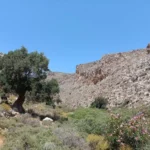
- 14.1 km
- Zakros Gorge
- 4 km
- 3 h
- E4 trail
The stunning Kato Zakros Gorge, also known as the Gorge of the Dead, begins just a short distance from Ano Zakros, almost 100km southeast of the Agios Nikolaos church, and culminates at the picturesque Kato Zakros beach. The breathtaking landscape, historical significance, and easy access of the gorge draw numerous visitors each year. The path through the gorge is a segment of the renowned E4 European trail.
The gorge is incredibly beautiful, with towering walls that house large caves. Inside these caves, archaeologists have discovered tombs from the Minoan era that hold artifacts of significant archaeological value. This discovery led to the gorge and caves being dubbed “Gorge of the Dead” and “Caves of the Dead” respectively.
Visitors can park their cars in the Ano Zakros village and traverse the gorge, which takes approximately 2 hours to reach Kato Zakros. Here, you can relax on the beach and dine at the charming seaside village’s taverns. Don’t miss out on a visit to the nearby Minoan Palace of Zakros. A convenient bus service from Kato Zakros can take you back to Ano Zakros, saving you a return trek through the gorge.
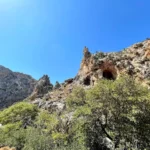
No results available
ResetGorges in other nearby areas
No results available
Reset

